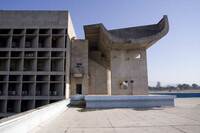- England
- Scotland
- France
- Holland
- Germany
- Italy
- Spain
- Portugal
- USA
- China
- Japan
- India
- Iran
- Advice
- Gardens
- England
- Scotland
- France
- Holland
- Germany
- Italy
- Spain
- Portugal
- USA
- China
- Japan
- India
- Iran
- Advice
- Garden Tours
Book: Landscape Planning and Environmental Impact Design: from EIA to EID
Chapter: Chapter 11 Urbanisation and growth management
The physical shape of a settlement can have a pronounced effect on its climate. Palladio explained the relationship as follows: The more the city, therefore, is in a cold place, and hath a subtile air, and where the edifices are made very high, so much the wider the streets ought to be made, that they may, in each of their parts, be visited by the sun.... But the city being in a hot country its streets ought to be made narrow, and the houses high, that by their shade, and by the narrowness of the streets, the heat of the site may be tempered, by which means it will be more healthy (Palladio 1965 edn: 59). Palladio followed Vitruvius in recommending that streets should not be aligned with the prevailing wind (Palladio 1965 edn: 60). Their advice went unheeded at Milton Keynes and the main street in the town centre was laid out on a southï¾west to northï¾east axis. It aligns with sunrise in midsummer but funnels the prevailing southï¾westerly wind. Cumbernauld in Scotland, with equal disregard for the wisdom of the ancients, was placed on a hilltop site with the aim of creating a strong urban image, like an Italian hilltown [Fig 11.9]. A very large shopping centre was built on top of a ridge, causing severe microclimatic problems. Cumbernauld is one of the most exposed towns in one of the most windswept urban regions in the world. Ian McHarg, having advised against the site for this reason, left Scotland forever. Cumbernauld lies directly in the path of incoming gales from the North Atlantic. Repton cautioned against the error of sacrificing aspect for prospect in 1803: There is no circumstance connected with my profession, in which I find more error of judgement, than in selecting the situation for a house... Not only visitors and men of taste fall into this error... No sooner has he discovered a spot commanding an extensive prospect, than he immediately pronounces that spot the true situation for a house; as if the only use of a mansion, like that of a prospectï¾tower, was to look out of the windows. After long experiencing the many inconveniences to which lofty situations are exposed; ...after vainly looking forward to the effect of future groves, I am convinced that it is better to decide the situation of a house when the weather is unfavourable to distant prospects (Loudon 1840 273). There have been microclimatic problems in the planned centres of other new towns. At East Kilbride they have been ameliorated by roofing the 1950s pedestrian streets to form enclosed shopping malls with full climatic control. At Skelmersdale the main footpath system was set into existing cloughs to establish a sheltered footpath network (Skelmersdale Development Corporation 1964: 42). Mistakes have also been made in planning 'standard' western town developments for tropical climates. The postï¾1945 plans for Kuwait City (Alï¾Yawer 1982: 111), by British consultants, for Chung Hisn in Taiwan, by American consultants (Gibson 1972: 208), for Chandigarh in India, by an international team (Ashihara 1983: 151), and for Tsukuba Academic Town in Japan (Ashihara 1983: 152), were all planned to create wide open spaces for roads and parks. In each of these towns the designers should have paid attention to Palladio's advice on the relationship between urban morphology and climate. Warm humid climates need wellï¾ventilated streets; cold climates need sunny streets; windy climates need sheltered streets; wet climates need roofed streets; harsh climates need indoor streets; hot arid climates need shady streets.
